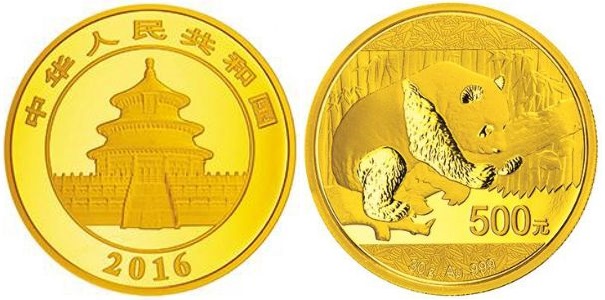9.4
7.666 Reviews

English
EN
China's central bank will launch a new series of gold and silver investment coins on October 28. What is special about these coins is that for the first time the weight is no longer based on a troy ounce, but on the metric system. The gold and silver Panda coins, which in the past always came in 1 troy ounce form, are now minted with a weight of 30 grams. That's slightly less than the weight measurement of 31.1034768 grams that we know as the troy ounce.
In a press release on the website of the Chinese central bank we read that the new Panda investment coins will be available from October 28. The Gold Coins are produced in nine different formats, the Silver Coins in three different weights. All coins have a purity of 99.9% and a face value in Chinese yuan.
Gold: 1 gram, 3 grams, 8 grams, 15 grams, 30 grams, 50 grams, 100 grams, 150 grams, 1 kilogram
Silver: 30 grams, 150 grams, 1 kilogram


The history of the troy ounce goes back to the Roman money system, in which bronze ingots were also used as a kind of currency. These bars had a standardized weight of one 'Troy Pound'. A twelfth part of it became a 'uncia' and there came the English name troy ounce from. So the troy ounce is 1/12 of the weight of those large bronze bars weighing a troy pound.
The standard weight of a troy ounce was maintained again and again after that. In England, this measure seems to have been in use since 1400. The U.S. Congress even enshrined the troy ounce in the Coinage Act of 1828 as the official weight standard.
The name troy ounce is also often associated with the French city Troyes. It was once an important trading city.
Today, the troy ounce is really only used as a standard weight for precious metals. Worldwide, people have become accustomed to gold, silver, platinum and palladium being denominated in grams as well as in troy ounces. Also, almost all investment coins are based on the standard weight of over 31.1 grams.
The history of the troy ounce lies in Western societies and money systems. Therefore, this standard weight is much less known in China than in Europe and the United States. Because the troy ounce does not appear in the history of the Chinese money system, it is much less common for the Chinese to use this standard weight.
So it is not only symbolic that the Chinese central bank is now marketing its gold and silver investment coins in a weight of 30 grams instead of a troy ounce.
The shift from troy ounces to a metric system has been going on for a few years now. For years, the Chinese have had large gold bars of 400 troy ounces melted down into gold bars with a standard weight of 1 kilogram.
